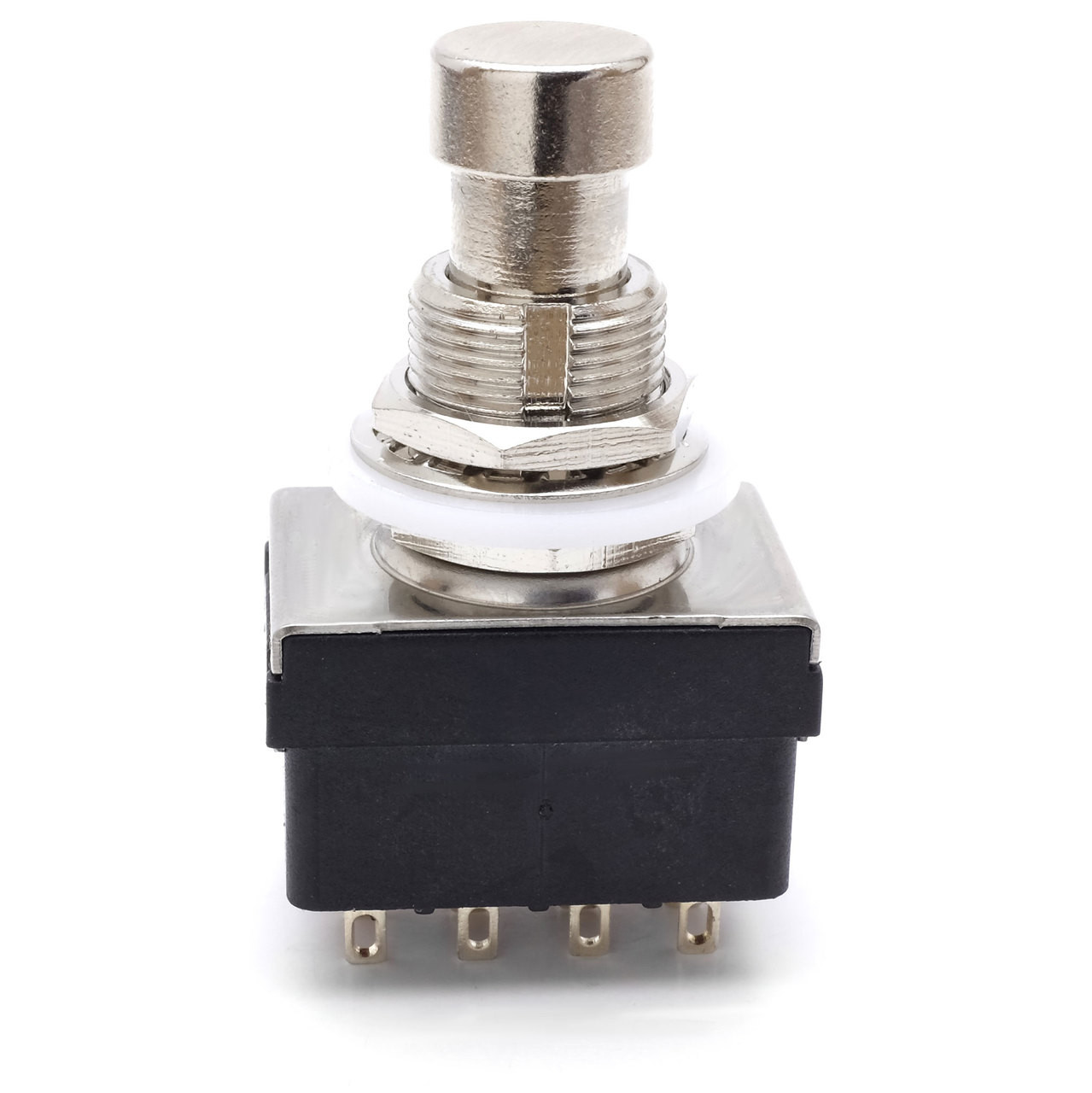

- Momentary switch diptrace how to#
- Momentary switch diptrace drivers#
- Momentary switch diptrace driver#
- Momentary switch diptrace full#
Thanks to Adam for showing me how to etch my own circuit boards – something I can now do quite easily at the Makerspace.

The most recent is the Cacophonator, whose circuit description and board layout are easy to find on the web. Here is the schematic that is used for all of them (save for the number of 7135’s of course).I’ve recently made several audio synthesizer / noise generating boxes.
Momentary switch diptrace drivers#
The downloads from OSHpark includes the source files for diptrace for anyone that wants to play around with it, along with pictures of the drivers assembled from diptrace to make assembly easier and a schematic for each one.
Momentary switch diptrace driver#
The firmware that can be used with this driver is the Bistro Tripledown variation which can be found here: The 7135’s are not included in this shopping cart as I don’t think digikey sells them, they are best ordered from links above. Īlso note that the cart includes both 08 OTC caps, you can remove one if you desire. You can also get the MCU/FET from RMM as well for a bit less money. As it stands right now you need the Attiny25 for Bistro and the Attiny85 for Narsil (aka, e-switch). The other are the Attiny version that you want. The SIR404 is the better FET but costs over twice the price, the NXP works just fine for most things. The items with a quantity of 1 have multiple options that you will need to pick from in the cart. Here is a DigiKey shopping cart with the components I used, there are both better and also cheaper options available if you want to pick out your own, so this is just for reference I like getting a bit tighter tolerance OTC as it can help when things get hot for example). The same can be done in reverse, you can put 0603 on the 0805 pads. You can fit 0805 on the 0603 pads if you are careful but if ordering new components, might as well go with 0603. The OTC is 0603 in the 17mm version and 0805 in the others, this is to make e-switch conversions easier. C2 is 0603 in all cases (0805 could be used). The resisters are all 0603 package (but you can use 0805 if you desire, just have to be more careful when building the driver).ĭiode and Zener are both SOD-323 package.

You will need to clip the center pin of the top side 7135 if you plan to use a bleeder resistor. Z: “Zener diode”: SOD-323 (Optional, only needed for 2S+ operation)ħ135 : Standard 350ma or 380ma 7135’s can be installed on these pads. PSMN3R0-30YLDX is a popular cheap option, the SIR800DP is better but costs more. U1 : SOIC-8 footprint Attiny25 for bistro, the 20mm+ versions have pads for the Attiny85, the 25 & 45 also fit on them Switch / OTC : 1206 pads for momentary switch or OTC location for clicky conversion. R1 : 22 k (or 220 k for e-switch lights, like you have been using)īR : Bleeder resistor for lighted tailcaps, varies between 470-630ohm (optional) So now to the Drivers themselves, they are designed around the parts list from DEL.
Momentary switch diptrace full#

Or if you need the space leave them all off and you can then clear any retaining ring you may desire. This bank allows for a great non-PWM, regulated high mode on most lights and you can simply leave some 7135’s off to adjust it to your exact liking. The bank of 6-8 7135’s is where things change from your normal FET+1 setup. The FET is obviously for turbo and works great at getting the most lumens possible. I find that the single 7135 is a great regulated low mode, even for high powered triples. The real key feature is the 3 channels combined with bistro and Narsil firmware to give you nearly endless options when it comes to UI. Ok, the idea with these drivers is that I can order them from OSHpark and keep them on hand for any build I may desire.


 0 kommentar(er)
0 kommentar(er)
